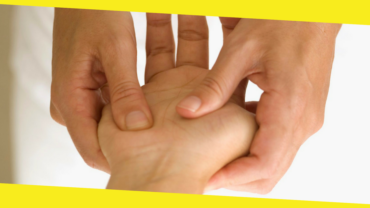Bouncing Back: Essential Steps In Overcoming A Spine Injury

Spinal injuries can be life-altering, affecting individuals physically, emotionally, and psychologically. They can result from various causes, including accidents, falls, and medical conditions. Whether you’re a pro athlete or the average citizen, it is only wise to do everything to reduce your risk of getting them as much as possible.
But suppose you are suffering from one right now.
In this article, we will explore common forms of spinal injuries, their causes, the prospects of recovery, factors affecting recovery, essential steps for a successful recovery, what to avoid during that period, and how to find suitable sources of care and support.
Contents
ToggleCommon Forms And Causes
A spinal injury can come in many forms, each with its own causes and levels of required intervention. According to experts like Spine Center Atlanta, the most common ones include the following:
1. Spinal Cord Injuries (SCI)
SCIs are often the result of traumatic incidents such as car accidents, falls, sports injuries, or acts of violence. Non-traumatic SCIs can also occur due to medical conditions like tumors, infections, or degenerative diseases. These injuries occur when there is damage to the spinal cord, disrupting its ability to transmit signals between the brain and the rest of the body.
2. Herniated Discs
Poor posture, repetitive lifting of heavy objects, obesity, and degenerative conditions like osteoarthritis can cause herniated discs. The discs that cushion the vertebrae can rupture or slip, leading to pain, numbness, and weakness in the affected area.
3. Spinal Fractures
These injuries can result from accidents, falls, or medical conditions that weaken the bones, such as osteoporosis or bone cancer. Fractures may occur in the vertebral bodies or the bony arches of the spine, and they can range from mild to severe, depending on the force of impact.
4. Spondylolisthesis
This condition is characterized by the slipping of one vertebra over another, often in the lower back. It can be congenital, resulting from a birth defect, or acquired due to factors like degeneration, fractures, or repetitive stress on the spine, as seen in athletes or laborers.
The prospects of recovery can vary significantly depending on the type and severity. Some cases see patients achieving a full recovery, mainly if the damage is mild or only affects soft tissues like muscles or ligaments. It usually involves rest, physical therapy, and lifestyle adjustments.
Others experience partial recovery, regaining some functionality and independence with a few issues. Dedicated rehabilitation efforts typically allow patients to overcome these challenges.
In the worst-case scenario, severe spinal cord injuries may result in permanent disability, where individuals have limited or no improvement in their condition. For these cases, the focus shifts to adapting to the new reality and maximizing quality of life.

The Crucial Steps To Recovery
Proper recovery involves a series of essential steps that help patients regain function, manage pain, and improve their overall quality of life. Here are the key steps to ensure a successful process:
- Immediate medical attention: Seek medical help promptly after sustaining a spinal injury. Early evaluation and treatment are critical for preventing further damage and optimizing the chances of recovery.
- Medical evaluation and diagnosis: Undergo a comprehensive medical evaluation to determine the type and severity of the spinal injury. Diagnostic tools like X-rays, MRI scans, or CT scans may be used to assess the extent of damage.
- Pain management: Work closely with healthcare providers to manage pain effectively. That may involve medications, physical therapy, and alternative therapies like acupuncture or chiropractic care.
- Rehabilitation and therapy: Engage in a structured rehabilitation program tailored to your specific injury and needs. Physical therapy is crucial for regaining strength, flexibility, and mobility. It may include exercises, stretches, and functional training. Meanwhile, occupational therapy helps you learn adaptive techniques for performing daily tasks and regaining independence.
- Assistive devices and mobility aids: Depending on the severity of the injury, consider using assistive devices like wheelchairs, walkers, or braces to enhance mobility and independence.
- Home modifications: Get help modifying your home environment to make it more accessible and safer. That may involve installing ramps, handrails, and grab bars, as well as rearranging furniture for better maneuverability.
- Nutrition and exercise: Maintain a balanced diet to support overall health and healing. Consult with a nutritionist if needed. Likewise, engage in adaptive exercises that are safe and recommended by your healthcare team.
- Following instructions: Adhere to prescribed medications, treatment plans, and routine shifts. Follow up with your healthcare provider regularly to monitor progress and make adjustments as needed.
- Social support and networking: Building a solid support system can provide emotional encouragement and practical assistance during recovery.
- Maintain a positive mindset: A positive attitude can profoundly impact recovery. Surround yourself with supportive individuals and focus on your accomplishments, no matter how small they may seem.
Know What To Do
Recovering from a spinal injury is a journey that requires determination, patience, and proper support. Nevertheless, people can increase their chances of a successful recovery by understanding their type of injury, sticking to their recovery goals, and cultivating the proper attitude.
Ask your attending healthcare team about getting specialized care for your case. This is the best way to get you started on a comprehensive, tailored, and effective recovery plan.
You may like this
Recommended For You
Acupressure Points for Cold, Fever and Flu
Most Inside
Most Inside offers high-quality recommendations and valuable updates to enhance all aspects of your life, providing premium guidance and enriching experiences.




